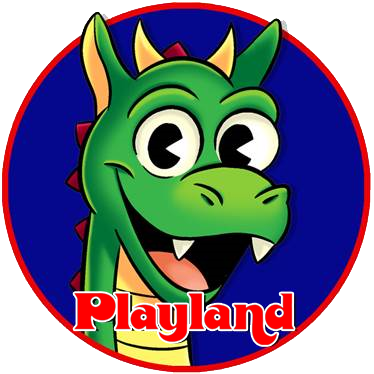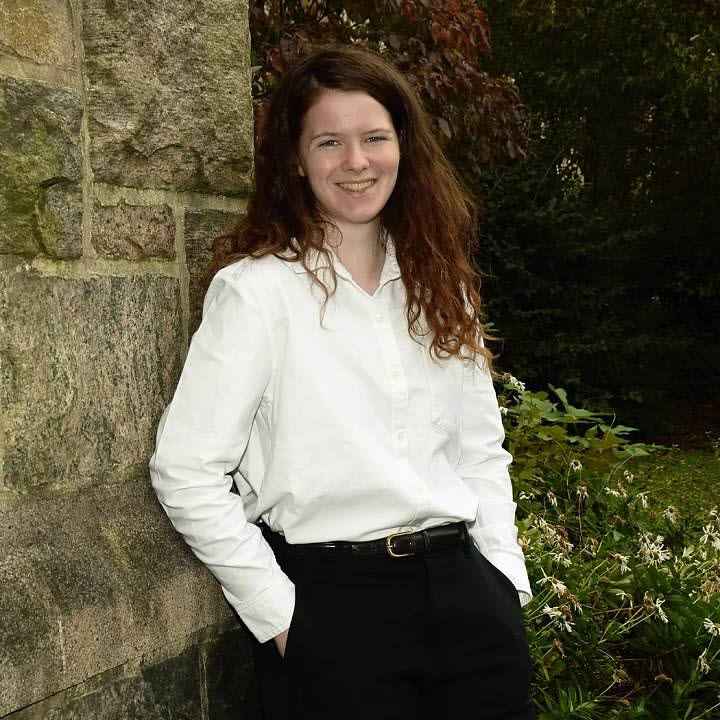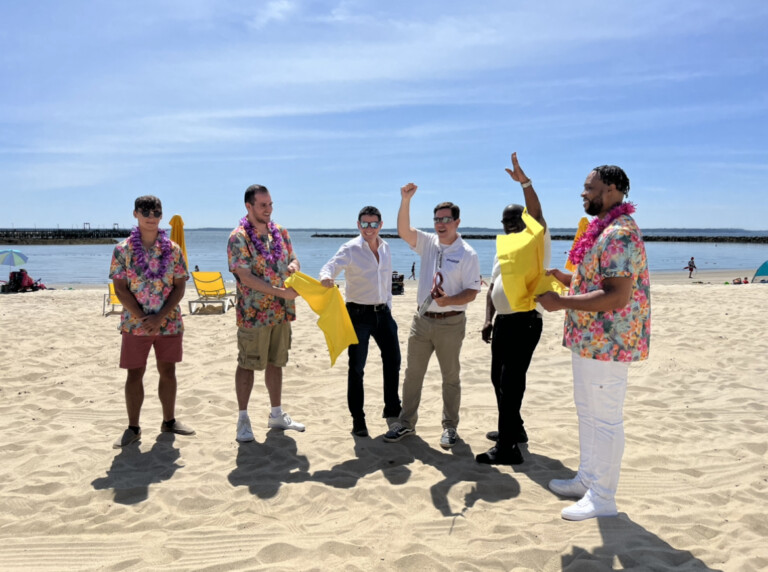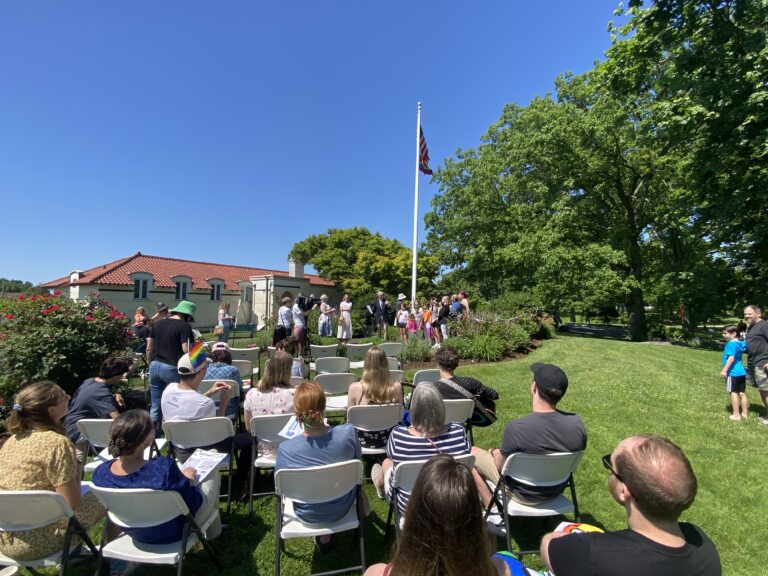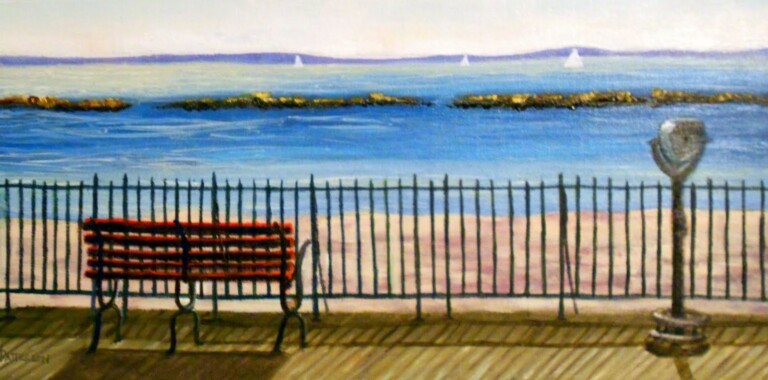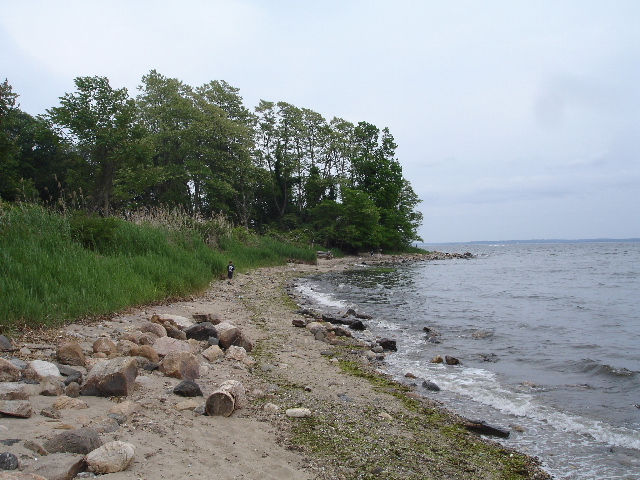Going Native: Gardening with Fairspring’s Sue Drouin
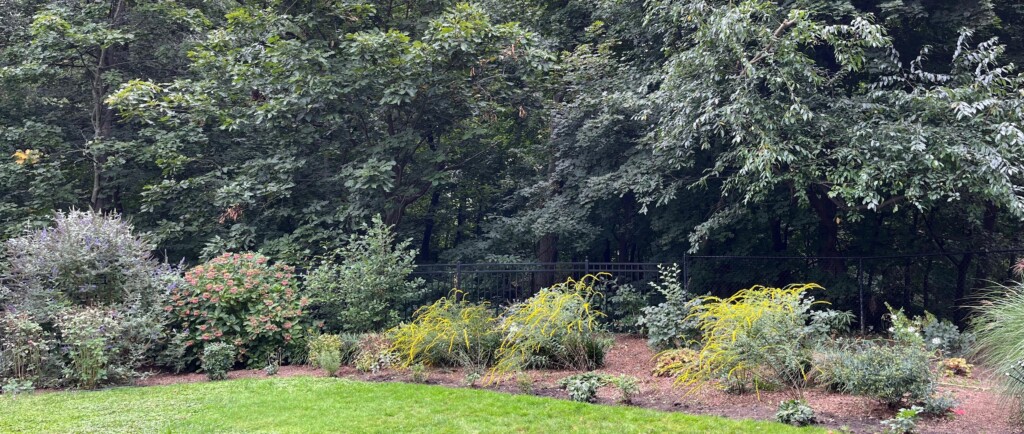
Going Native is a new garden series highlighting the contribution of native plants to building resilient landscapes. In this series, MyRye.com will introduce you to native plant experts that will tell you ways to get started with a small garden patch, a complete property or just a few garden containers.
Today, please meet Sue Drouin, owner/designer of Fairspring.
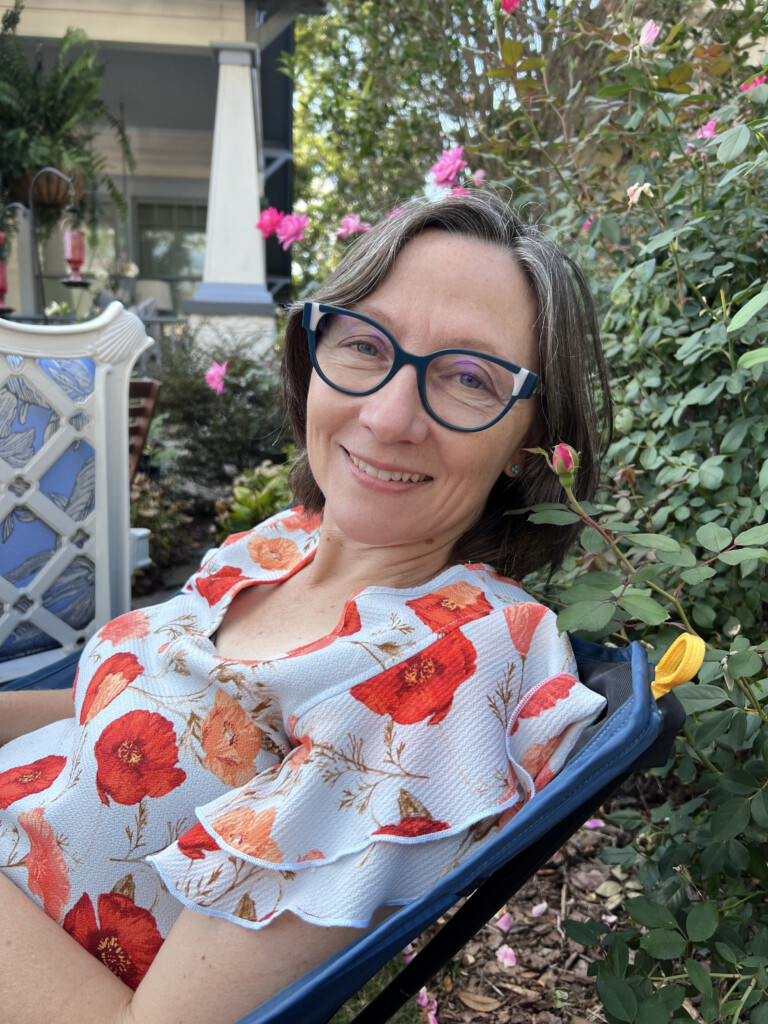
Your name: Sue Drouin
Your company and role: Fairspring, owner/designer
MyRye.com: Explain your professional training and education with respect to native plants and ecology.
Drouin: My professional training in landscape design has mostly been at the New York Botanical Garden, and I continue to update my knowledge with the latest books, classes and lectures. I just completed a Wetland Delineator Certification Series through Rutgers University, and am also a Master Gardener volunteer through Cornell University’s Westchester cooperative extension.
Why do you work primarily with native plants?
Drouin: Think of your home garden as your habitat, one that is situated in an incredible ecosystem. My goal is to help people connect to and support that ecosystem, and the most efficient way to do that is to develop resilient native plant communities. Plus, when we connect with the plants in our landscapes it’s joyful and not just an intellectual exercise.
What are some of the benefits of native plants?
Drouin: In today’s world we need our plantings not only to provide us with beauty, but also to feed and give shelter to pollinators, to clean our stormwater, to cover our roofs, and sequester carbon. From roadsides to residential settings, native plants often fit the bill. They can be striking in color and form, or simply blend into the background; and they can be used in formal as well as naturalistic designs. Plus, they have a lot more going on from the microscopic to the macro level than say, hostas or vinca or pachysandra, because the plants, the wildlife and the soil have evolved together over the centuries and sustain each other, which in turn, help them thrive without things like fertilizer, compost or other inputs.
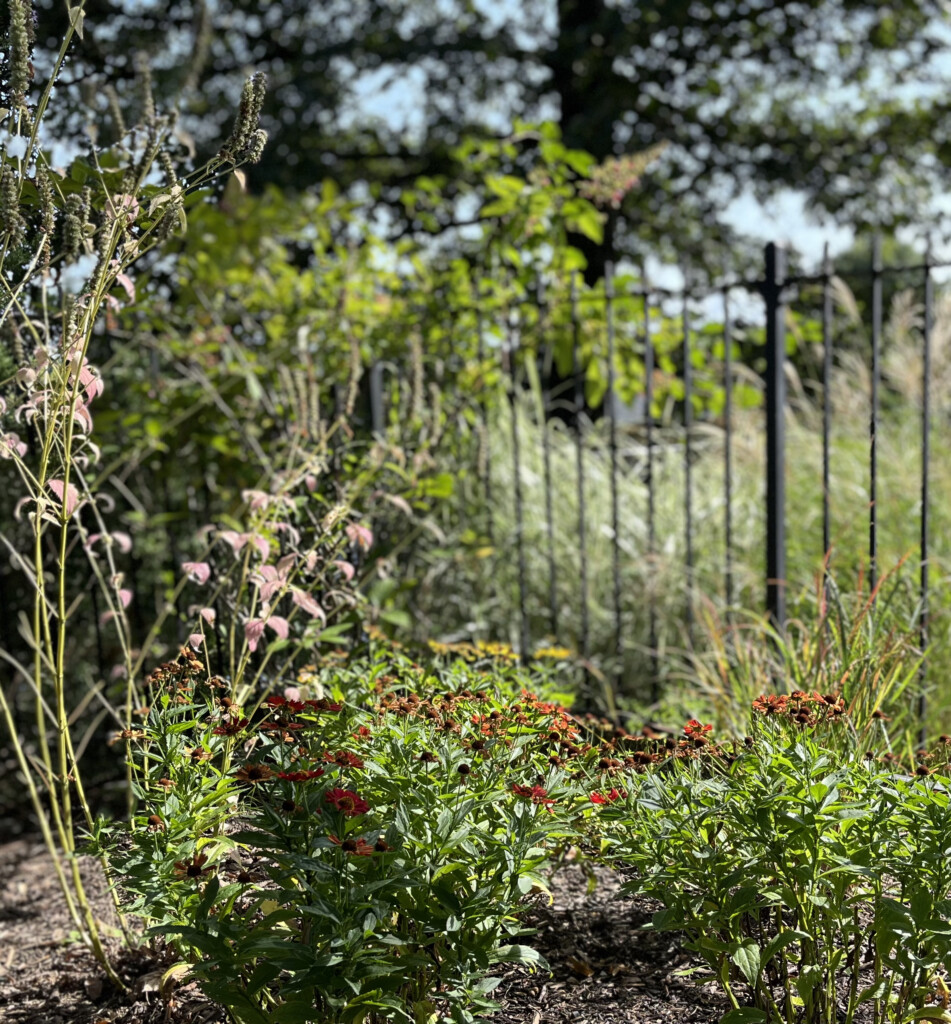
What are invasive and non-native plants?
Drouin: Rye is situated in a wonderfully dynamic part of the Northeastern Coastal Zone (locals call it the Sound Shore), with rich soil, plenty of rainfall, warm humid summers and severe winters, resulting in hospitable conditions for a broad range of plants. With intense urbanization here, the land is susceptible to invasive plants, perhaps the most susceptible in the country.
Invasive plants are basically the thugs of the plant world, most have been imported from another plant community as landscape plants and have no naturally occurring competition, so they grow and spread so much that they crowd out most other plants, and also not providing any benefit to wildlife. Think Japanese knotweed (Polygonum cuspidatum), or golden bamboo (Phyllostachys aurea).
Non-native plants are considered to be less threatening and damaging than invasives. The Lower Hudson Partnership for Regional Invasive Species Management has the latest information.
What is a straight native versus a cultivar?
Drouin: Plant breeding companies develop new varieties of plants to enhance certain characteristics, and these are known as cultivars. If you are shopping for plants, they are commonly notated on the label with single quotes, like Coreopsis ‘Hot Paprika’. While there is no regulatory framework for these definitions, the terms are generally accepted. “Straight natives” or “wildtypes” would be those plants that have propagated in the wild.
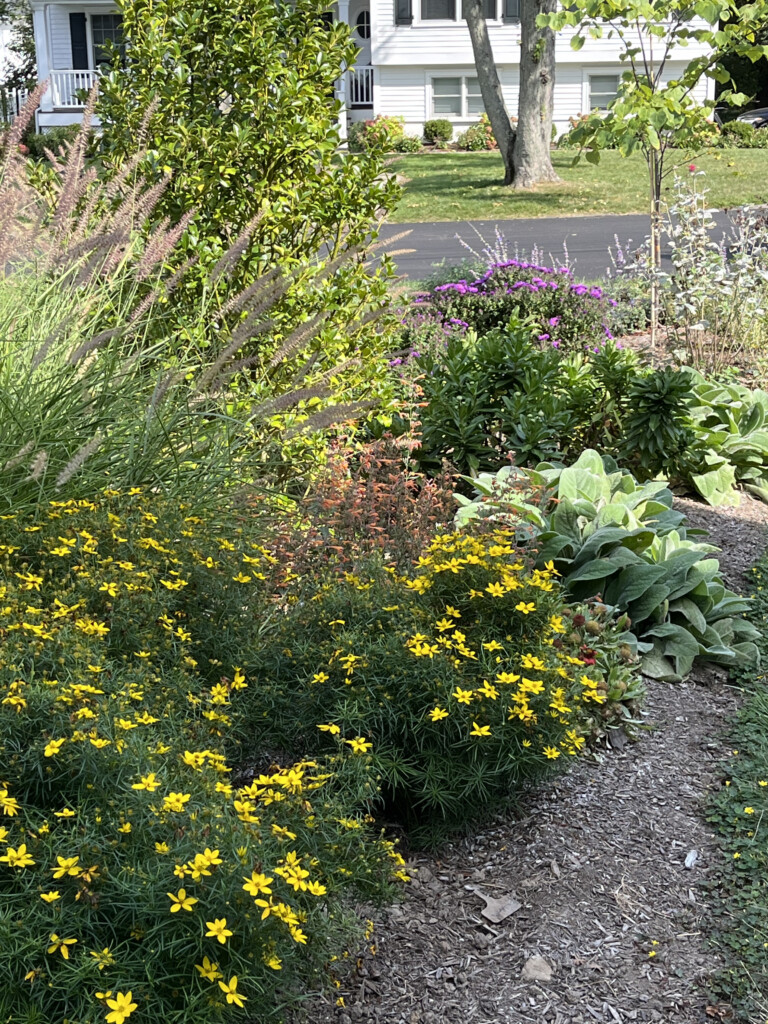
If someone is new to native plants, how do you suggest one gets started?
Drouin:
- Look around your yard and decide on an area you’d like to add some new native plants, a shrub or a tree. It might be an empty spot in an existing flower bed, or you may want to take a chunk out of your lawn to do it. Do you have mostly shade, or blazing sun? Is it wet soil or dry? Then refer to a trusted source, like the plant list from the National Wildlife Federation, to learn about the different native plants and see how each plant on the list can support a particular butterfly, moth or pollen specialist bee, and get ready to invite nature into your yard.
- If you don’t have the time and would prefer to outsource, then tell your landscaper or if you prefer, call an expert who can make recommendations.

It is the fall season – what are some good action items around fall planting, yard care and thinking ahead to spring?
Drouin:
Fall is a great time to:
- Take stock, and plant a few new things. I often tell my friends to go to the nursery a few times during the growing season, because inventories change frequently. Flowers and berries on native perennials, shrubs and trees provide pollen and nectar, so having flowers and berries in as many seasons as possible is a great way to support our birds and pollinators. Right now, blooming asters (Symphyotrichum spp. and Eurybia divaricata), goldenrod (Solidago spp.), and New York ironweed (Vernonia noveboracensis) are plentiful. Common winterberry (Ilex verticillata) is of special value to honey bees and in late fall produces bright red berries that are a favorite food source for birds.
- Spent flowers and brown seed heads provide winter interest in a garden (think of the beauty of the High Line in NYC in winter). Those spent flowers are filled with seeds for birds, so don’t clip them off in fall.
- Beneficial insects seek winter shelter in stems, leaves and rock piles. Cocoons and chrysalids often look like pieces of dead leaves, so leave the leaves on your property, raked off the lawn and into a flower bed. Instead of tying up and carting away twigs and fallen branches, allow them a space to decompose and feed the soil.
Explain four or five of the most common invasive plants in the Rye landscape, and some good native substitutes:
Drouin:
| Common Invasive | Native Substitute(s) | Comments |
| Japanese spirea | summersweet (Clethra alnifolia) or sweetspire (Itea virginica) | Gorgeous fall foliage, heavenly scented flowers, versatile shrubs |
| astilbe | goatsbeard (Aruncus dioicus) | Large feathery plume |
| English ivy | Ferns, Canadian ginger (Asarum canadense), foamflower (Tiarella) | These plants can spread over time, but not aggressively |
| liriope/lily turf | creeping phlox (Phlox stolonifera) | Front of the border, green ground cover when not blooming |
| shasta daisy | blanket flower (Gaillardia aristata) or sneezeweed (Helenium autumnale) | Late summer, sun-shiny daisy-like richly colored beauties |
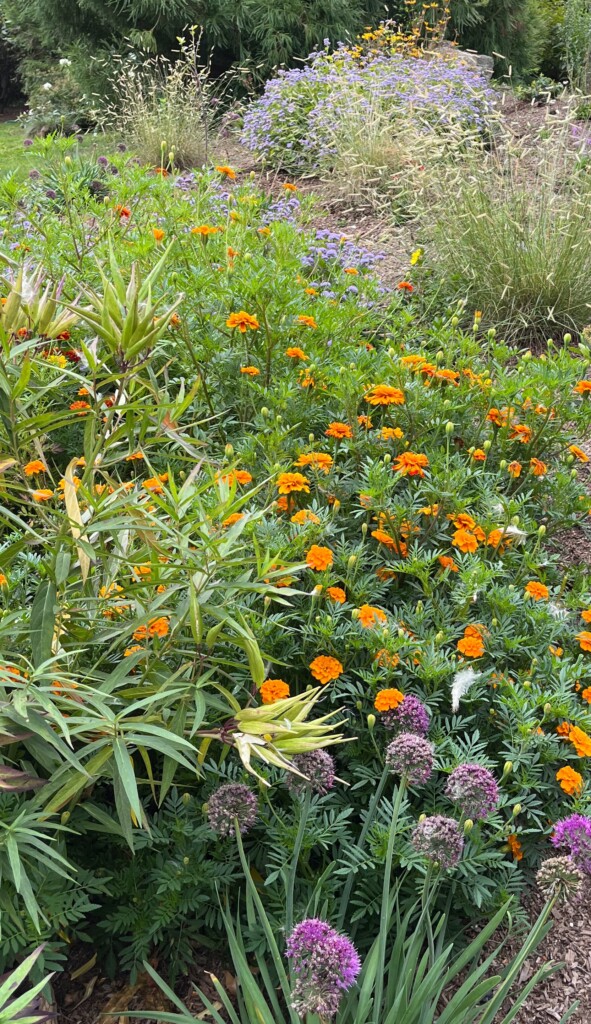
Privacy screening with plants is important to many homeowners in Rye – what are good native species to consider for screening projects.
Drouin: Arborvitae is a North American native, but is often a target for deer. Cedar, holly, pine, junipers and ornamental grasses provide a range of textures and heights for good evergreen privacy coverage. Consider a mixture rather than a monoculture.
What are good resources for people to learn more about natives?
Drouin:
| Resource Name | Detail | website |
| Pollinator Partnership | Guide for selecting plants for pollinators in our Eastern Broadleaf Oceanic eco-region | link |
| Planting Westchester | Plants for Westchester county | link |
| NYC Parks | Native Species Planting
Guide for New York City |
link |
| Westchester Pollinators Facebook Group | Forum to share info and ask questions | link |
| Rye CC/AC and Rye Sustainability | Planting for Pollinators in Rye Plant List (they are also native plants) | link |
| Ecological Landscape Alliance | Notable Natives: Large Shrubs and Small Trees | link |
What are three good local nurseries that specialize and / or have expertise in native plants?
Drouin:
I get plants from wholesale sources, so I’m not familiar with the local retail offerings, but here are a few places to start:
- Izel Plants is a good source for natives, and they sell plugs, which are cheaper than one-gallon pots.
- Westchester County Community College’s Native Plant Center keeps a list of nurseries.
Tell us about some of your native plant projects in Rye or elsewhere in Westchester County
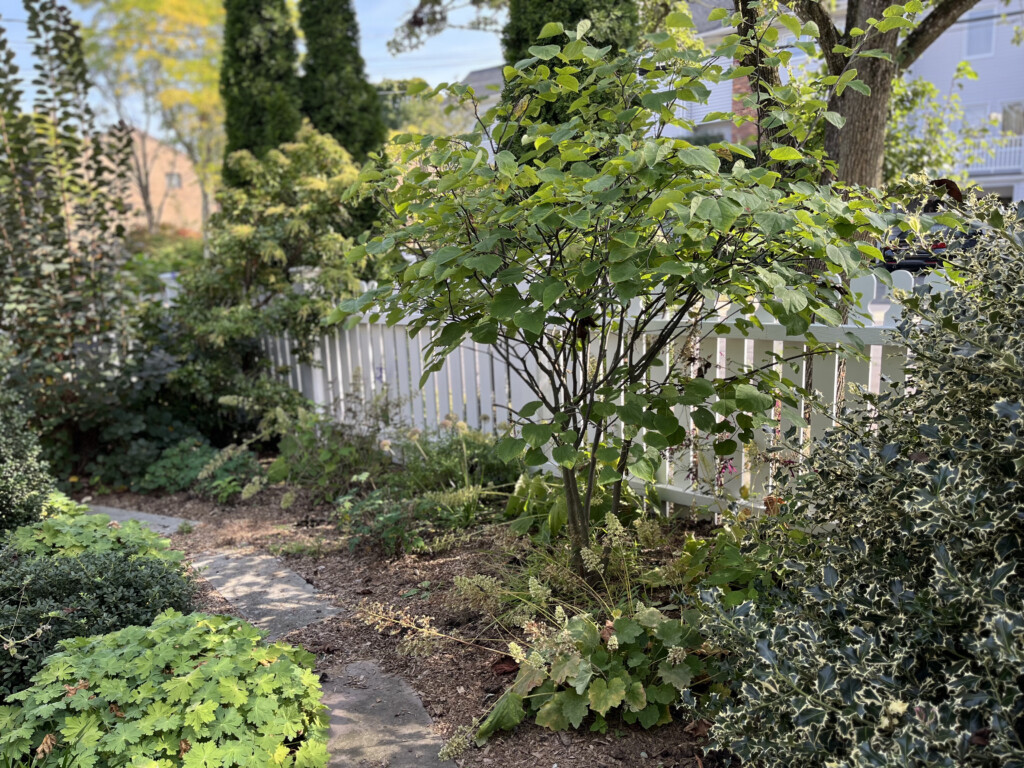
Drouin:
- Rye Beach area – This sweet front yard conversion features understory flowering trees, native columbine (Aquilegia canadensis), coral bells (Heuchera villosa), wild geranium (Geranium macrorrhizum), and is irrigated by collected rainwater. And no lawn to mow!
- Rye Gardens – Reclaimed sections of expansive lawn to provide pollinator-friendly plants year-round. The design included many different plants, including standouts aster (Symphyotrichum novae-angliae), hyssop (Agastache spp.), tickseed (Coreopsis verticillata), butterfly weed (Asclepias tuberosa), blanket flower (Gaillardia aristata), and beebalm (Monarda spp.).
- Hix Park in Rye – Conversion of an underutilized area where the lawn struggled to fill in to a pollinator oasis. Standouts are hyssop (Agastache foeniculum), wild geranium (Geranium macrorrhizum), little bluestem (Schizachyrium scoparium), aster (Symphyotrichum novae-angliae) and sneezeweed (Helenium autumnale).
- New construction in Rye – This deeply shaded ground floor patch beneath a deck needed some green, and feathery bluestar and ferns, velvety coral bells (Heuchera villosa) and Canadian ginger (Asarum canadense) and evergreen sedges (Carex spp.) and grasses provide lots of texture.
- Rye Gardens #2 – The homeowner fell head over heels for native plants and pollinators, and asked me to enhance their back garden, then an area of the front garden, and then started doing it on their own (with a tiny bit of guidance from me), removing large portions of the lawn. The new gardens are full of butterflies, hummingbirds and pollinators of all kinds.
Tell us about your services:
How would your friends and family describe you in one word?
Drouin: Dedicated
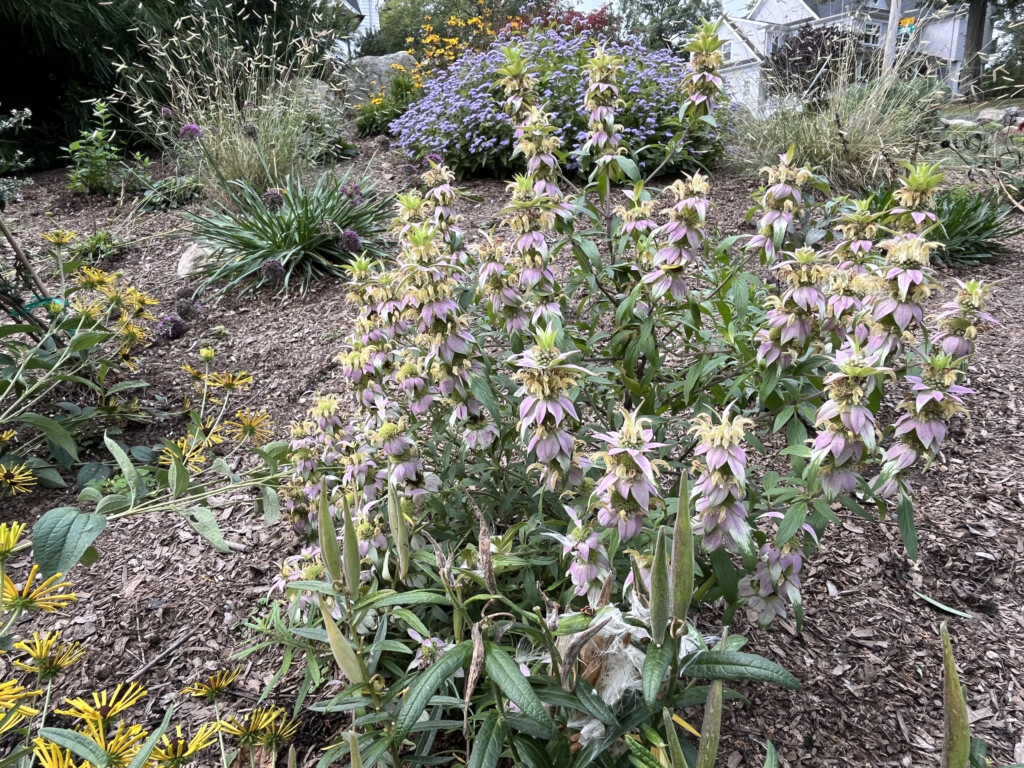
Summarize your career in five sentences or less.
Drouin: I grew up fishing and swimming on the Long Island Sound, and helped my parents in our huge backyard vegetable garden. I went to Emory University, and worked in development for many years, but always pursued art and design just for fun and took my first landscape design class sometime in the early 2000’s. With the encouragement of family and friends, I officially opened Fairspring in 2018.
Do you work on residential, government and/or commercial projects?
Drouin: Yes, I have worked on projects with municipalities, parks, private entities and residential clients.
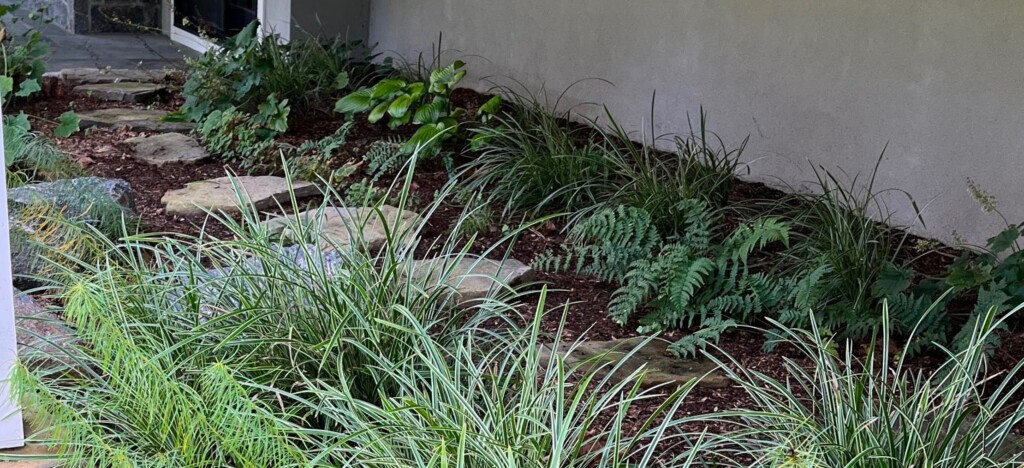
How many years have you worked with native plants?
Drouin: 10+ years
Which of the following services do you provide:
Drouin:
| Service | Yes or No | Detail |
| Ecological assessment | Yes | I make observations of the soil, sun exposure, terrain and other factors, including the built environment. I will then make recommendations based on the goals of the property owner as well as research. I introduce concepts like native plants, pollinators, stormwater runoff, and where we can positively impact these things. |
| Design with native plants | Yes | I use native plants in every design. If requested, I can use exclusively native plants in a design. |
| Installation of native plants | Yes | |
| Invasive species management | Yes | |
| Organic lawn service, including electric equipment | No | |
| Organic shrub and tree care | Yes | Most native plants thrive on a little stress, so less is more. |
| Care guide | Yes | At the end of an installation, I provide guidance on stewardship, watering, and how best to keep the plants in balance with each other. Most native plants don’t want much help doing their own thing, and in winter provide food, shelter and nesting material to wildlife. |
Tell us about you:
Where do you live?
Drouin: Rye Gardens, in Rye
What do you do with your free time?
Drouin: Traveling to public gardens and Garden Conservancy Open Days, and spending time with family and friends. Lately I’ve been obsessed with oak trees and am on the hunt for oaks older than 200 years. There are quite a few left in Rye!
Thanks Sue!
Learn more:

